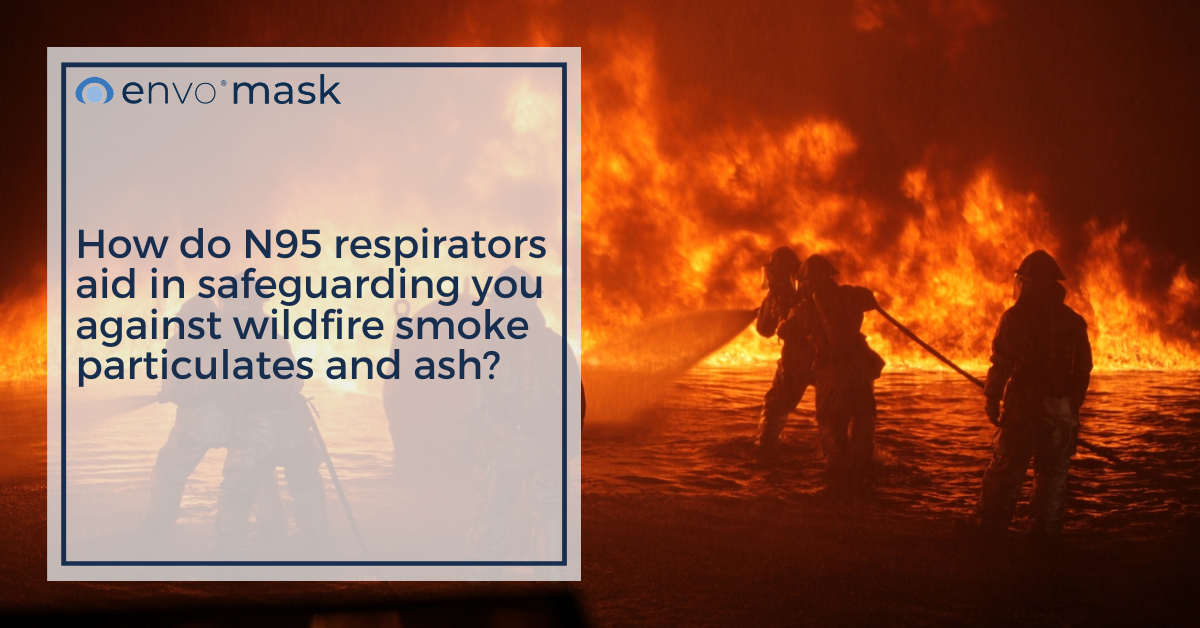The general public’s awareness of personal protective equipment (PPE) has increased due to health issues, making N95 respirators a popular choice. However, these respirators can also safeguard wearers against more than just viruses, such as wildfire smoke particulates and ash.
According to the United States Environmental Protection Agency (EPA), “Smoke is made up of a complex mixture of gases and fine particles produced when wood and other organic materials burn. The biggest health threat from smoke is from fine particles. These microscopic particles can penetrate deep into your lungs. They can cause a range of health problems, from burning eyes and a runny nose to aggravated chronic heart and lung diseases. Exposure to particle pollution is even linked to premature death.”
How does an N95 respirator assist in safeguarding you against airborne particles emitted from wildfire smoke?
Pause for a moment and consider the following scenarios:
A homeowner is preparing to evacuate their residence because of a wildfire that has coated the exterior of their house with ash.
A couple is heading to a region that has recently suffered from wildfires, and there is a considerable amount of destruction in the vicinity. They are preparing to bring personal protective equipment (PPE) to ensure their safety.
After receiving a call to an area contaminated by wildfire pollution, a fire chief is collecting personal protective equipment (PPE) for her team. The purpose of this gear is to reduce their exposure to fine-particle aerosols resulting from the pollution.
N95 respirators are examples of PPE that will help safeguard the individuals in the above scenarios from any small-particle aerosols emitted from any wildfire smoke and ash that they encounter. Read on to learn more about how N95 respirators can do just that.
To that end, a GeoHealth research article, “Quantifying the Health Benefits of Face Masks and Respirators to Mitigate Exposure to Severe Air Pollution,” explains, “To assess the ability of face coverings to provide population-level health benefits to wildfire smoke, we perform a case study for the 2012 Washington state fire season. Our models suggest that although natural-fiber masks offer minor reductions in respiratory hospitalizations attributable to smoke (2%–11%) due to limited filtration efficiency, N95 respirators and to a lesser extent surgical and synthetic-fiber masks may lead to notable reductions in smoke-attributable hospitalizations (22%–39%, 9%–24%, and 7%–18%, respectively). The filtration efficiency, bypass rate, and compliance rate (fraction of time and population wearing the device) are the key factors governing exposure reduction potential and health benefits during severe wildfire smoke events.”
It is critical to note that an N95 respirator does not afford the same protections that a self-contained breathing apparatus (SCBA), compressed air breathing apparatus (CABA), or breathing apparatus (BA) does. An N95 respirator is not an oxygen mask. To that end, SCBAs safeguard wearers from imminent danger in environments void of breathable air.
Envo®mask’s N95 respirator with patented Airgel® technology maximizes comfort without compromising on safety, offering wearers protection in real-world scenarios such as being exposed to wildfire smoke and ash. If you’re seeking a NIOSH-certified respirator that can safeguard you against wildfire smoke and ash, visit the envo mask store today.
